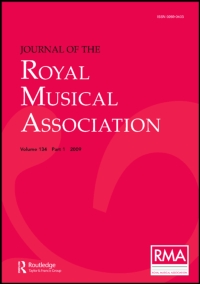No CrossRef data available.
Article contents
Experimental Pianofortes and the Music Written for Them
Published online by Cambridge University Press: 01 January 2020
Extract
During the earlier years of the nineteenth century a pianoforte recital without an orchestral accompaniment to at least one of the works, was a rarity and the concerto form was almost always used in all the greater performances. It was not, in fact, until 1837 that Moscheles ventured to introduce pianoforte-evenings without this addition. The great pianists wrote concertos or divertissements for their instrument and in order that these works could be performed by the amateur in his home, where there could be no orchestra, all the tuttis were printed in short score and with the appropriate dynamic marks. Thus a pianist often found himself playing music originally designed for strings, brass or wood wind. In consequence of the desire on the part of these amateurs for two and four hand reduction of operatic and symphonic works, numerous devices were added to the pianoforte for the purpose of giving the illusion of an orchestra. These may be grouped under the following headings:—
(1) Devices for sustaining the sounds after the note had been struck.
(2) Octave couplers.
(3) Characteristic stops such as (a) echo pedal, (b) bassoon stop, (c) Janissary music.
(4) “Repetition” actions to make it possible to imitate quickly repeated notes of the violins in trills and cadences.
- Type
- Research Article
- Information
- Copyright
- Copyright © Royal Musical Association, 1930
References
1 See Niecks, “Programme Music.” (London, p. 102.)Google Scholar


